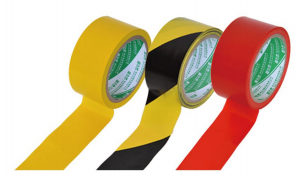The Versatility of Butyl Rubber Flashing
Butyl rubber flashing is an essential component in various construction and roofing applications, prized for its durability, flexibility, and excellent sealing properties. This specialized material is a type of synthetic rubber that is manufactured through the polymerization of isobutylene, often combined with a small amount of isoprene to enhance its performance. With its unique properties, butyl rubber flashing has become a go-to solution for professionals looking to prevent leaks and protect structures from water intrusion.
One of the most significant advantages of butyl rubber flashing is its outstanding waterproofing capabilities. The material forms a highly effective barrier against moisture, making it ideal for applications in roofs, walls, and foundations. When properly installed, butyl rubber flashing can withstand severe weather conditions, including heavy rain, snow, and wind, thereby prolonging the life of the building and reducing maintenance costs.
Moreover, butyl rubber is highly resistant to UV radiation, ozone, and extreme temperatures, which can cause other materials to degrade over time. This characteristic makes it particularly suitable for outdoor applications, where exposure to environmental elements is a concern. Unlike traditional flashing materials that may crack or become brittle, butyl rubber maintains its elasticity and adhesion, providing reliable performance for years.
butyl rubber flashing

Installation of butyl rubber flashing is relatively straightforward, further contributing to its popularity among contractors
. The material often comes with an adhesive backing, allowing for quick application without the need for additional bonding agents. This ease of use enables construction professionals to save time and labor costs, making butyl rubber flashing a smart choice for both large projects and smaller repairs.In addition to its primary function as a waterproofing agent, butyl rubber flashing also acts as a sound dampener. Its dense composition helps to minimize noise pollution from outside sources, creating a more comfortable and peaceful indoor environment. This property is particularly beneficial in urban settings where traffic and other noises can be a constant distraction.
The versatility of butyl rubber flashing extends beyond roofing; it can also be used in various other applications, including HVAC systems, automotive sealing, and even in the insulation of electrical equipment. This adaptability highlights the material's value across different industries, reaffirming its essential role in modern construction and manufacturing.
In conclusion, butyl rubber flashing offers a combination of durability, flexibility, and ease of installation that makes it a favored choice among builders and contractors. Its ability to withstand harsh environmental conditions while providing effective waterproofing solutions positions it as a critical material for enhancing the longevity and sustainability of structures. Whether in residential, commercial, or industrial settings, butyl rubber flashing proves to be an indispensable asset in construction.
-
XIANGFAN Rubber Tape-Ultimate Solutions for All Your Insulation NeedsNewsJun.24,2025
-
XIANGFAN Rubber Tape-Protection for Industrial and Residential ApplicationsNewsJun.24,2025
-
XIANGFAN Rubber Tape: Superior Safety and Sealing for Demanding EnvironmentsNewsJun.24,2025
-
XIANGFAN Rubber Tape: Reliable Solutions for Every Electrical ChallengeNewsJun.24,2025
-
XIANGFAN Electrical & Industrial Tape: Powering Reliability Across IndustriesNewsJun.24,2025
-
XIANGFAN Electrical & Industrial Tape: Excellence in Every ApplicationNewsJun.24,2025
